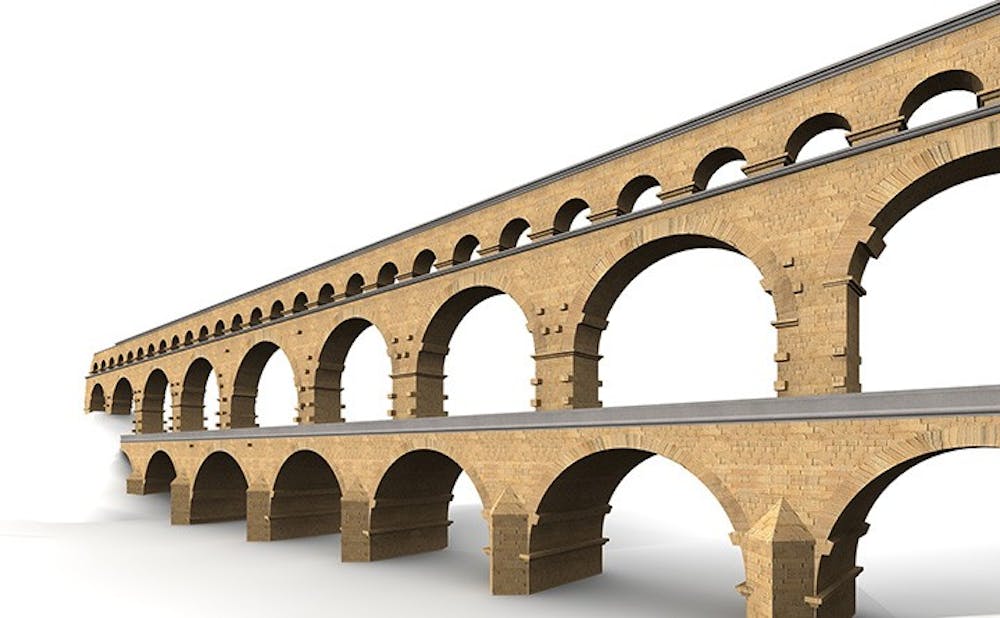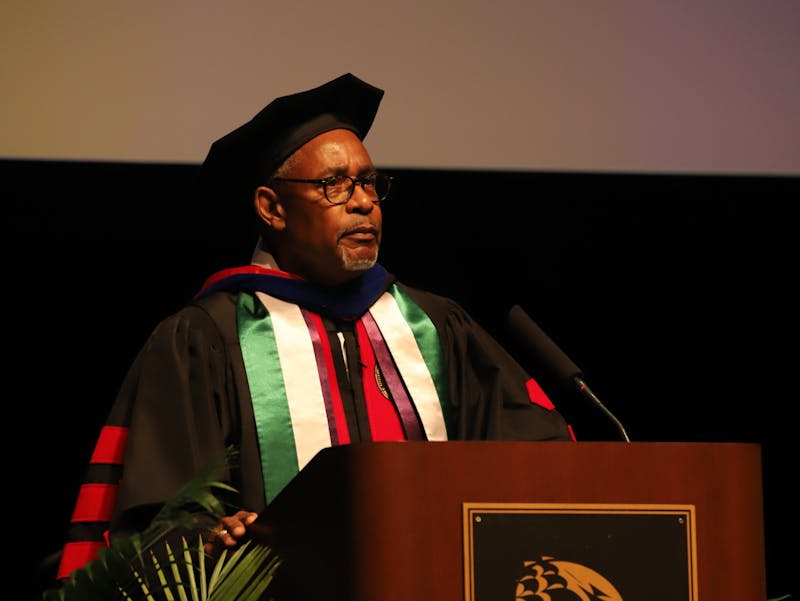Of all the issues that concern Shippensburg University students, the nation’s (crumbling) infrastructure probably does not fall high on the list of what is important.
Roads, bridges and public transportation is not the sexiest topic to talk about, and the mere mention of PennDOT may have you cringing. But hang in there, because the quality of America’s infrastructure is what determines if you will drink contaminated water, blow a tire on the interstate or have a ride to your job.
In the last few years, front pages were covered with stories about concerns of collapsing bridges and bursting water mains. The American Society of Civil Engineers (ASCE) gave the U.S.’s infrastructure a “D+” in 2013, and the U.S.’s Highway Trust Fund nearly went dry in the spring of 2015. But when President Barack Obama’s administration pushed through the GROW AMERICA Act that invested $478 billion into roads and bridges, the issue waned out of the spotlight.
Even when journalists spread the word of Flint, Michigan’s lead-contaminated water, the ensuing outcry never fully brought the issue back into focus. Is that because America’s infamous infrastructure problems are on the road to recovery? Was Flint just another realization of how bad the problem was?
No. In all likelihood, Flint is just the tip of the iceberg with what is wrong. Sixty-five percent of U.S. roads are in a “less than good condition” and 25 percent of bridges need “significant repair,” according to the Obama administration.
In Pennsylvania, 15 percent, or about 18,000 miles, of its roads are in poor condition, according to the U.S. Department of Transportation. Out of the commonwealth’s 22,660 bridges, more than 9,500 are considered structurally deficient, or deemed functionally obsolete.
If you are wondering why Interstate 81 does not have three lanes to accommodate rush hour traffic, or why Amtrak stops its service in Harrisburg, the answer is funding. Not even a near $500 billion infrastructure package can boost America’s public transportation services up to Japanese or European standards. It may not even be enough to fix the damaged roads and bridges the nation has, let alone build more.
According to the ASCE’s 2013 estimate, the U.S. would need to invest $3.6 trillion by 2020 to improve its dams, pipelines, roads, rails and ports. That is about a $212 billion per year commitment if it started in 2013. The GROW AMERICA Act provides less than $80 billion per year, and it will only run for six years. Granted, there are more ways for the U.S. to raise money for projects, but this act was the single biggest investment under the Obama administration.
Without the proper funding, the nation cannot alleviate congested roadways, channel water to parched cities or compete globally for innovative transportation systems. But besides carrying out new projects, there is still the need to maintain and repair decades-old dams and bridges, and hire the people to inspect the structures.
Obama may have solved one crisis, but what do the presidential hopefuls have in mind to rebuild America?
Between debates and TV interviews, the five major candidates unanimously agreed America’s infrastructure is collapsing, and not only can they repair it, but they can get Americans new jobs in the process. A quick glace at their websites proves the Republicans are relying on privatization to help pave the way forward. The Democrats, on the other hand, each have similar plans, but with vastly different levels of funding.
Hillary Clinton lays out a five-year, $275 billion plan to modernize America, with renovated airports, faster rail systems and new investments in clean energy.
Sen. Bernie Sanders has his own cornerstone project that hearkens back to President Franklin Delano Roosevelt’s New Deal. It is a similar five-year plan, but the investment is about $1 trillion, that could (temporarily) open up 13 million jobs in a nation-wide program.
But that money still has to come from somewhere, and not everyone may be happy with where it comes from.
Infrastructure. It may not seem that attractive, but it is kind of a big deal.




The Slate welcomes thoughtful discussion on all of our stories, but please keep comments civil and on-topic. Read our full guidelines here.